In the world of housing, terms like manufactured homes, mobile homes, and modular homes are often used interchangeably. However, there is a distinct contrast between these terms that is important to understand. Are you curious about the difference? In this article Is a Manufactured Home a Mobile Home we will discuss the differences. We will also sprinkle in some questions that are common when it comes to this subject.
Manufactured homes are built in a factory and then transported to a home site where they are permanently placed on a foundation. On the other hand, mobile homes refer to structures that were constructed prior to 1976 when new building standards were implemented. These structures were designed to be movable and placed on wheels or trailers. The term “mobile home” is now outdated and replaced by “manufactured home.”
As the housing industry evolves, manufactured homes are gaining popularity due to their affordability, quality construction materials, and customizable options.
Understanding Different Home Types
There are various types available, including traditional homes, manufactured homes, mobile homes, and modular homes. We will also highlight the key differences between them.
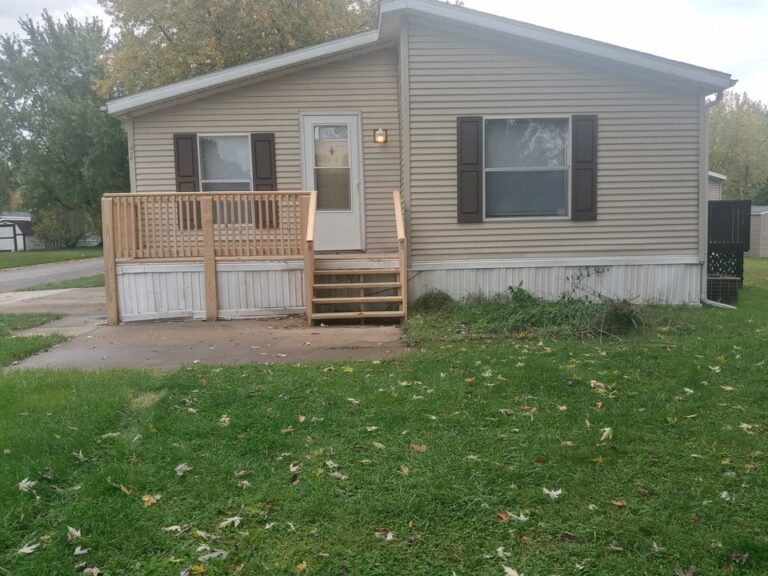
Defining Manufactured, Mobile, and Modular Homes
Manufactured homes, mobile homes, and modular homes are all categories of prefabricated housing. Manufactured homes are constructed entirely in a factory before being transported to their final location. These homes comply with federal building codes set by the U.S. Department of Housing and Urban Development (HUD).
Mobile homes were originally introduced as a more affordable option for homeownership. They were built on steel frames with wheels attached for mobility. However, the term “mobile home” is now commonly used interchangeably with “manufactured home.”
Modular homes are built in sections or modules in a factory setting but are then transported to the site where they are assembled on a permanent foundation. These homes often adhere to local building codes rather than federal standards.
Understanding the construction methods and regulations for each type is crucial when considering purchasing or living in one of these housing options. While manufactured and mobile homes share similarities due to their factory-built nature, modular homes differ in terms of both construction process and compliance with local codes.
The Evolution of Mobile Homes
Mobile homes have come a long way since their inception. Originally designed as basic structures with limited amenities, they have evolved significantly over time. Technological advancements have played a vital role in improving the design, quality, and overall appeal of mobile homes.
Modern mobile homes now offer an array of features such as spacious layouts, energy-efficient appliances, upgraded finishes, and customizable options. They can resemble traditional site-built houses both inside and out while providing affordability that traditional homeownership might not offer.
The impact of technological advancements has also led to improved construction techniques and materials. Today’s mobile homes are built to withstand various weather conditions and offer greater durability compared to their predecessors.
Key Differences Between Home Types
While manufactured, mobile, and modular homes share similarities in terms of factory construction, there are key factors that differentiate them from one another. It’s important to understand these distinctions when considering which type of home is right for you.
One significant difference lies in the building codes that govern each type of home.
Question: What is the Difference Between Mobile Home and Manufactured Home?
The terms “manufactured home” and “mobile home” are often used interchangeably, but there are some distinctions between them. Both refer to types of homes that are built off-site and transported to their final location, but the key differences lie in the construction standards, mobility, and terminology.
-
Construction Standards:
- Mobile Homes: Historically, the term “mobile home” was used to describe homes built before the implementation of certain construction standards. These homes were often less regulated in terms of safety and building codes.
- Manufactured Homes: The term “manufactured home” is generally used for homes built after the implementation of the HUD (U.S. Department of Housing and Urban Development) Code in 1976. This code established specific construction standards for the design, construction, and installation of manufactured homes, ensuring higher quality and safety.
-
Mobility:
- Mobile Homes: Traditionally, mobile homes were designed to be more easily movable. They were built on a chassis with wheels and a tow hitch, allowing for relocation.
- Manufactured Homes: While still transportable, manufactured homes are often less mobile than traditional mobile homes. They are typically transported to their final location on a flatbed truck and are then placed on a permanent foundation.
-
Terminology:
- Mobile Homes: The term “mobile home” is becoming less common and is sometimes considered outdated. It is often associated with older homes built before the HUD Code came into effect.
- Manufactured Homes: This term is more commonly used today, especially for homes built to the HUD Code standards. It reflects the improved construction quality and adherence to safety standards.
In summary, the main difference lies in the era of construction and the associated standards. “Mobile home” is often used to refer to older, less regulated homes, while “manufactured home” is a term used for homes built to the HUD Code standards established in 1976 and onwards. Keep in mind that regional terminology and regulations may vary.
Advantages of Manufactured Homes
Benefits of Choosing Manufactured Homes
Manufactured homes offer several advantages over other types of housing. One significant benefit is the cost savings they provide. Compared to traditional site-built homes, manufactured homes are typically more affordable. This affordability makes homeownership more accessible for individuals and families on a tight budget.
Another advantage of manufactured homes is the customization options available. Homeowners have the opportunity to personalize their living space according to their preferences and needs. From choosing floor plans to selecting finishes and fixtures, there is a wide range of customization possibilities. This level of flexibility allows homeowners to create a home that reflects their unique style and taste.
Energy Efficiency Is Key
In addition to cost savings and customization, manufactured homes are also known for their energy efficiency benefits. These homes are designed with energy-efficient features such as insulation, high-performance windows, and efficient heating and cooling systems. As a result, homeowners can enjoy reduced utility bills while minimizing their environmental impact.
Furthermore, manufactured home construction offers convenience and speed. Unlike traditional construction methods that can take months or even years, manufacturing a home in a factory setting significantly reduces the time required for completion. The controlled environment ensures efficient workflow without delays caused by weather conditions or labor shortages.
Energy Efficiency and Sustainability
Manufactured homes prioritize energy efficiency through various design elements. These homes often incorporate advanced insulation materials, such as spray foam or blown-in cellulose insulation, which help maintain comfortable indoor temperatures year-round while reducing energy consumption.
Sustainable building practices are also employed during the manufacturing process of these homes. Many manufacturers use environmentally friendly materials that minimize waste generation and promote recycling efforts. Some companies implement green building certifications like LEED (Leadership in Energy and Environmental Design) to ensure sustainable practices throughout production.
Choosing a manufactured home contributes to long-term environmental benefits as well. The energy-efficient features reduce greenhouse gas emissions associated with heating and cooling requirements, resulting in a smaller carbon footprint. Furthermore, the use of sustainable materials and construction practices helps conserve natural resources and protect the environment for future generations.
You might be interested in our article: 10 Ways to Boost Energy Efficiency in Mobile Homes
Customization and Design Options
Manufactured homes offer a wide range of customization and design options to suit individual preferences. Homeowners can select from various floor plans, sizes, and layouts to create their ideal living space. Whether it’s an open-concept design or a traditional layout, there are options available to meet diverse needs.
Moreover, homeowners can personalize their manufactured homes with a variety of finishes, fixtures, and interior design choices.
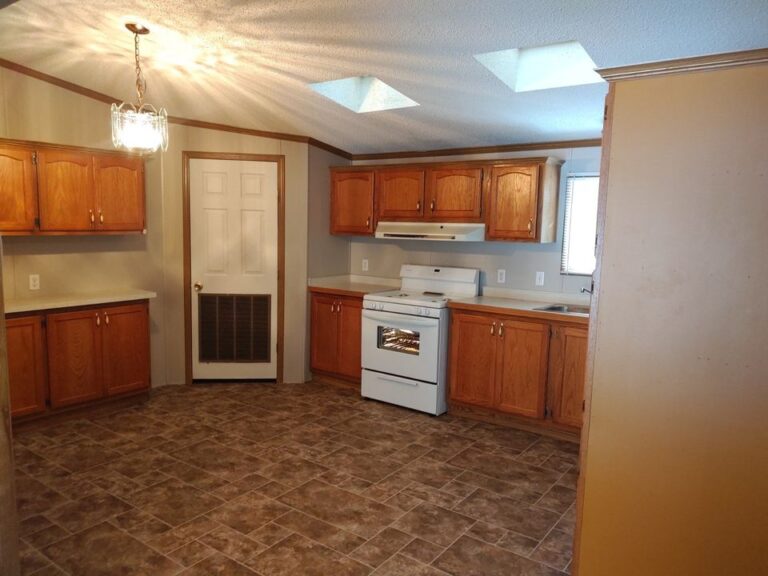
Financial Aspects of Manufactured Homes
There are several financial aspects to consider.
Financing Options and Tips
If you’re considering buying a manufactured home, it’s important to understand the financing options available. There are loan programs specifically tailored to purchasing these types of homes. When exploring financing options, it’s crucial to consider down payment requirements and credit considerations. It’s advisable to have a good credit score before applying for a loan.
To secure favorable financing terms, it’s essential to do thorough research and find reputable lenders who specialize in manufactured home loans. Comparing interest rates, loan terms, and fees from different lenders can help you make an informed decision. Working with a lender experienced in manufactured home financing can provide valuable guidance throughout the process.
Cost Considerations and Variations
The cost of a manufactured home can vary depending on various factors. These factors include the size of the home, the features included, the location where it will be placed, and any customization or upgrades desired. It’s important to carefully evaluate these factors when budgeting for your new home.
Regional variations in pricing and affordability also play a significant role in the overall cost of a manufactured home. The cost may differ between states or even within different areas of the same state due to variations in land prices or local regulations affecting construction costs.
One advantage of choosing a manufactured home over a traditional site-built home is potential cost savings. Manufactured homes often offer more affordable housing options compared to their site-built counterparts without sacrificing quality or comfort. This affordability makes them an attractive choice for many prospective homeowners looking for an affordable housing solution.
The Bankrate Promise for Financial Clarity
When making financial decisions regarding your new manufactured home purchase, having access to reliable information is crucial. Bankrate is a trusted resource that provides clarity on financial matters, including home loans and financing options.
With a commitment to empowering consumers with accurate and up-to-date financial information, Bankrate offers valuable resources such as mortgage calculators, expert advice, and current interest rate data. These tools can assist you in making informed decisions about financing your manufactured home.
By utilizing Bankrate’s resources, you can gain a better understanding of the financial aspects associated with purchasing a manufactured home.
Question: Can a Mobile Home Be Considered a Manufactured Home?
Yes, a mobile home built to meet the HUD Code standards established in 1976 or later is considered a manufactured home. The term “mobile home” is often used to refer to older homes built before these standards were in place.
Regulations and Standards
Exploring the HUD Code for Manufactured Homes
The U.S. Department of Housing and Urban Development (HUD) plays a crucial role in regulating manufactured homes, ensuring safety and quality standards are met. One of the key components of this regulation is the HUD Code. This code establishes construction and design standards that must be followed by manufacturers.
Compliance with the HUD Code is essential for both manufacturers and homeowners. It sets forth requirements for structural integrity, fire resistance, energy efficiency, and overall safety measures. By adhering to these standards, manufactured home builders can provide homeowners with a high level of assurance regarding the quality and durability of their homes.
For homeowners, compliance with the HUD Code offers several benefits. First and foremost, it ensures that their homes meet strict safety standards, protecting them from potential hazards. It provides peace of mind knowing that their homes have been built to withstand various environmental conditions such as windstorms or earthquakes.
Quality Assurance in Manufactured Housing
Manufactured housing goes through rigorous quality control measures during its manufacturing process. Manufacturers implement stringent procedures to ensure that each home meets or exceeds industry standards.
One important aspect of quality assurance is third-party inspections. These independent inspections are conducted by certified professionals who evaluate every stage of the manufacturing process to verify compliance with building codes and regulations. This additional layer of scrutiny helps maintain consistent quality across all manufactured homes.
Certifications for Manufactured Homes
Furthermore, certifications play a significant role in assuring homeowners about the quality of their manufactured homes. Various organizations offer certifications that validate compliance with specific building standards or energy efficiency requirements. These certifications serve as evidence that a manufactured home has undergone thorough testing and meets certain benchmarks for performance and durability.
The commitment to delivering high-quality manufactured homes extends beyond meeting regulatory requirements; it is ingrained in the industry’s ethos. Manufacturers continually invest in research and development to enhance construction techniques, materials used, and overall product innovation. This dedication ensures that homeowners receive homes that are not only safe and durable but also aesthetically pleasing and technologically advanced.
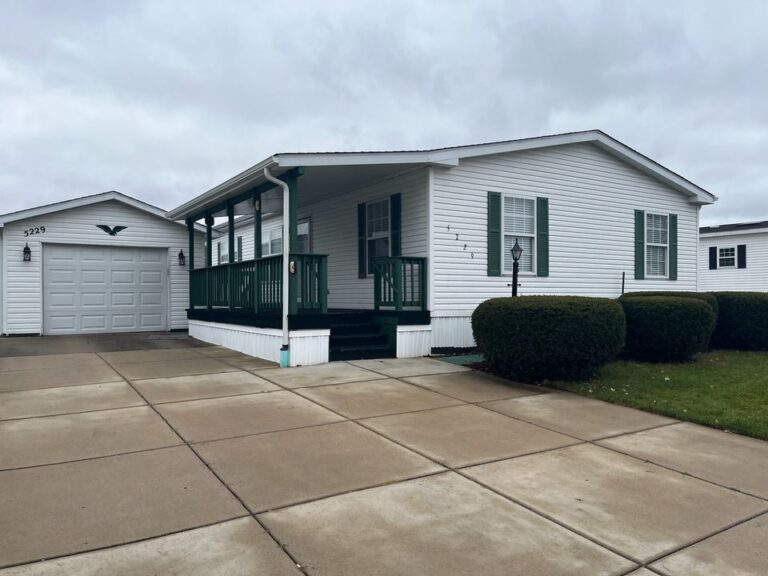
Designing Your Prefab Home
Customization Options for Manufactured and Modular Homes
Both manufactured and modular homes offer a range of customization options. Whether you prefer a traditional or contemporary style, these homes can be tailored to suit your preferences. With manufactured and modular homes, you have the flexibility to modify floor plans, choose from various design options, and select upgrades that align with your vision.
Modular homes provide an extensive array of customization possibilities. You can work closely with the manufacturer to make modifications to the floor plan, such as adding extra rooms or expanding existing spaces. You have the freedom to select different finishes, fixtures, and appliances that align with your taste and lifestyle.
Manufactured homes also offer customization options that allow homeowners to personalize their living space. From selecting exterior finishes like siding materials and colors to choosing interior features such as flooring types and cabinetry styles, there are numerous choices available. These options enable homeowners to create a home that reflects their unique personality while still adhering to safety standards and regulations.
Innovative Designs in Prefab Housing
Prefab housing has come a long way in terms of innovative designs. Today’s prefab homes showcase cutting-edge concepts and architectural styles that defy traditional notions of what a prefabricated home looks like. With advancements in technology and construction techniques, architects and designers are pushing boundaries.
One notable aspect of modern prefab housing is the use of sustainable materials. From eco-friendly insulation materials to energy-efficient windows, these homes prioritize environmental consciousness without compromising on aesthetics or durability. This focus on sustainability not only benefits the environment but also helps homeowners reduce their carbon footprint.
Prefab Housing Different Styles
Architectural trends in prefab housing encompass a wide range of styles – from sleek contemporary designs featuring clean lines and minimalist interiors to rustic cabins inspired by nature’s beauty. The versatility offered by prefabricated construction allows for experimentation with various architectural elements, resulting in unique and eye-catching homes.
In addition to the exterior design, prefab homes also offer innovative interior layouts. Open floor plans are a popular choice for many homeowners, providing a seamless flow between different living spaces. These layouts maximize natural light and create a sense of spaciousness within the home. Other features such as smart home technology integration and customizable storage solutions further enhance the functionality and convenience of prefab homes.
Question: Why Was The Term Mobile Home Replaced With Manufactured Home in 1976?
The term “mobile home” was replaced with “manufactured home” in 1976 due to the implementation of the HUD Code, which established construction and safety standards for these homes. The change aimed to improve the quality, durability, and safety of factory-built homes, distinguishing them from earlier, less regulated mobile homes. The term “manufactured home” reflects the adherence to these standards and the evolution of the industry.
The Green Aspect of Manufactured Homes
Energy-Efficient Construction Benefits
Exploring the energy-saving features incorporated into prefab housing construction reveals a range of benefits. One key aspect is insulation, which helps regulate indoor temperatures and reduce the need for excessive heating or cooling. Insulation materials such as spray foam or cellulose can be used to create an airtight seal, preventing heat loss during winter and heat gain during summer.
In addition to insulation, energy-efficient HVAC (Heating, Ventilation, and Air Conditioning) systems are often installed in manufactured homes. These systems are designed to optimize energy usage by providing efficient heating and cooling while minimizing electricity consumption. Programmable thermostats allow homeowners to set temperature schedules that align with their daily routines, further reducing energy waste.
Renewable Energy and Your Manufactured Home
Manufactured homes also offer the opportunity to harness renewable energy sources such as solar power. Solar panels can be installed on the roof, converting sunlight into electricity that can power various appliances and systems within the home. This renewable energy option not only reduces reliance on traditional power grids but also contributes to lower utility costs over time.
Green Construction Practices
Prefab housing embraces sustainable building practices that prioritize environmental consciousness. One example of this is the use of eco-friendly materials in construction. These materials may include recycled or reclaimed wood, bamboo flooring, low VOC (Volatile Organic Compound) paints, and sustainable countertops made from recycled glass or concrete.
Waste reduction strategies are another important aspect of green construction practices in manufactured homes. Builders aim to minimize construction waste by implementing recycling programs on-site and using precision manufacturing techniques that produce less material waste overall. This approach not only reduces landfill impact but also lowers costs associated with waste disposal.
Energy – Efficient Systems in a Manufactured Home
Energy-efficient systems play a significant role in making prefab homes environmentally friendly. LED lighting fixtures are commonly used throughout these homes due to their low energy consumption and long lifespan compared to traditional incandescent bulbs. Water-saving fixtures such as low-flow toilets and showerheads are also installed to conserve water usage without sacrificing comfort.
By choosing green prefab homes, individuals can contribute to a more sustainable future. These homes not only reduce environmental impact but also offer the potential for long-term cost savings through lower utility bills and reduced maintenance expenses. Embracing energy-efficient construction and sustainable building practices is a step towards creating a greener and more eco-friendly housing industry.
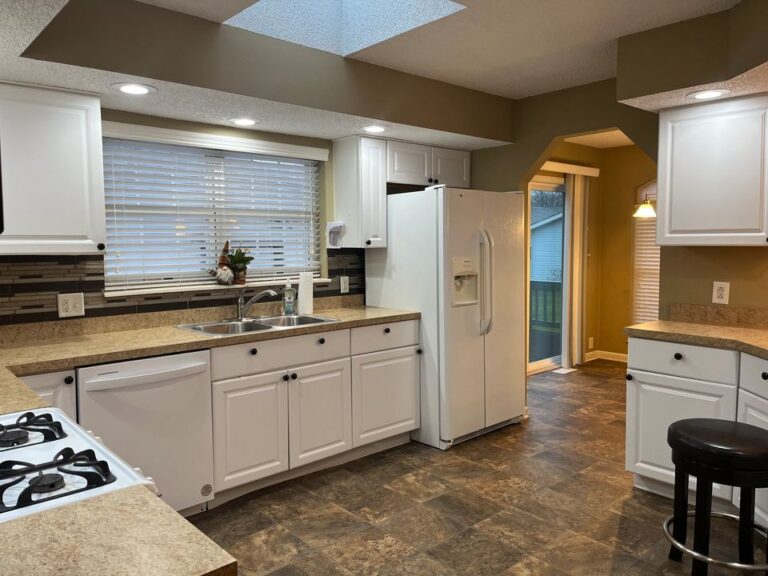
Safety and Construction Quality
Safety Features in Prefab Homes
Prefab homes prioritize occupant safety by incorporating various safety measures and features. These homes are designed with fire-resistant materials to minimize the risk of fire-related incidents. Fire-resistant materials such as gypsum boards, non-combustible insulation, and fire-rated doors are commonly used in the construction of prefab homes. These materials help to contain fires and prevent them from spreading rapidly, providing valuable time for occupants to evacuate safely.
In addition to fire-resistant materials, prefab homes often come equipped with advanced security systems. These systems include burglar alarms, surveillance cameras, and motion sensors that enhance the overall security of the home. With these features in place, occupants can feel confident about their safety and protection within their prefab home.
Emergency exits are another crucial aspect of safety in prefab homes. These homes are designed with multiple emergency exit points strategically placed throughout the structure. In case of an emergency such as a fire or natural disaster, these exits provide alternative escape routes for occupants to quickly evacuate the premises. The presence of emergency exits ensures that occupants have easy access to safe areas outside the home during critical situations.
Role of In-House Engineering Staff
The expertise and contributions of in-house engineering teams play a vital role in ensuring the structural integrity and compliance with building codes for prefab homes. These professionals work closely with architects and designers to develop robust structural plans that meet all necessary regulations and standards.
The primary responsibility of the engineering staff is to ensure that every aspect of construction adheres to strict quality control measures. They meticulously review architectural plans, conduct thorough inspections during each phase of manufacturing, and verify that all components meet industry standards before assembly begins. By implementing rigorous quality control processes, they guarantee that each prefab home meets or exceeds safety requirements.
Moreover, in-house engineering teams possess extensive knowledge about different construction techniques and materials suitable for prefabricated structures. Their expertise allows them to identify the most durable and reliable materials that can withstand various environmental conditions. This ensures that prefab homes are built to last, providing long-term quality and durability for homeowners.
Perception and Realities
Understanding Public Perception Issues
Public perception plays a significant role in shaping our views and opinions. There are often common misconceptions and stereotypes that can cloud people’s judgment. However, efforts are being made to change these perceptions through education and awareness.
One of the most prevalent misconceptions about manufactured homes is that they are synonymous with mobile homes. While mobile homes were popular several decades ago, today’s manufactured homes have evolved significantly in terms of quality, design, and construction. It’s essential to address this misunderstanding and highlight the differences between the two.
By showcasing success stories of homeowners who have embraced manufactured and modular homes as their dream housing option, we can challenge negative perceptions. These stories demonstrate how individuals have found comfort, affordability, and pride in their decision to live in a manufactured home. By sharing these experiences, we can inspire others to reconsider their preconceived notions.
The Importance of Date Built in Value Assessment
When evaluating the value of a manufactured home, one crucial factor to consider is the date built or age of the home. This information plays a significant role in determining its worth.
Just like any other type of property, manufactured homes experience depreciation over time. However, understanding how different factors influence depreciation rates and resale values is key when assessing their value accurately.
The date built directly impacts a manufactured home’s value because newer homes generally hold more value than older ones due to advancements in construction techniques and materials. Newer homes may come with modern features such as energy-efficient appliances or updated layouts that appeal to potential buyers.
On the other hand, older manufactured homes may require more maintenance or renovations to stay up-to-date with current standards. Therefore, it’s essential for buyers and sellers alike to take into account the date built when determining an accurate assessment of a manufactured home’s worth.
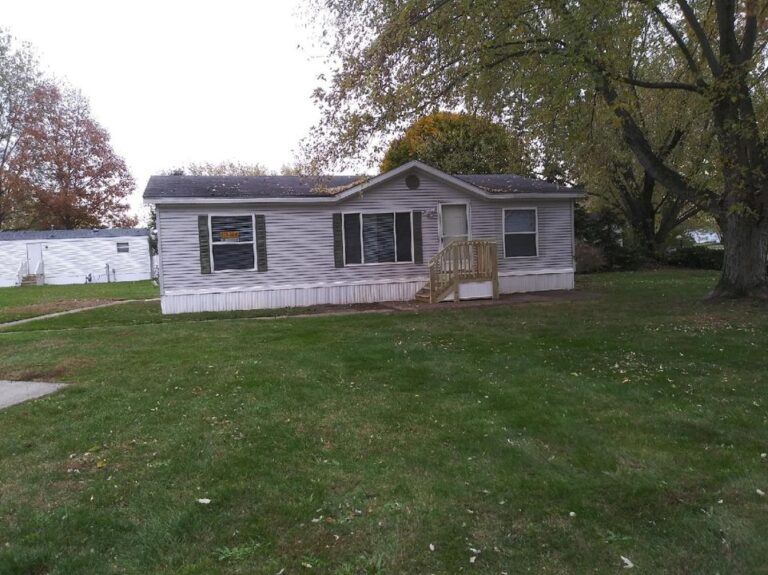
Final Considerations in Home Selection
Factors When Choosing Your Home Type
When deciding between a manufactured, mobile, or modular home, there are several important considerations to keep in mind. One of the key factors is location. Think about where you want to live and whether the type of home you choose aligns with that area. Some neighborhoods may have restrictions on certain types of homes, so it’s essential to do your research.
Budget is another crucial factor. Manufactured homes are often more affordable than traditional stick-built houses, making them an attractive option for those on a tight budget. However, it’s important to consider long-term costs as well, such as maintenance and utilities.
Your lifestyle and future plans should also play a role in your decision-making process. If you value flexibility and the ability to move around easily, a mobile home might be the best fit for you. On the other hand, if customization options and community living are important to you, a manufactured or modular home could be a better choice.
Ultimately, individual preferences and priorities will guide your decision. Take the time to assess what matters most to you and how each type of home aligns with your needs and goals.
Pros and Cons of Owning a Manufactured Home
Owning a manufactured home comes with its own set of advantages and disadvantages that are worth considering before making your final decision.
One significant advantage is affordability. Manufactured homes tend to be more cost-effective than traditional houses due to their factory construction process. They offer an opportunity for homeownership at a lower price point.
Customization options are another benefit of owning a manufactured home. Many manufacturers offer various floor plans and design choices that allow homeowners to personalize their space according to their preferences.
Community living can also be an appealing aspect of owning a manufactured home. Some communities cater specifically to manufactured homes, providing amenities such as pools, recreational areas, and organized activities for residents.
However, it’s important to be aware of potential challenges as well. Resale value can sometimes be a concern with manufactured homes. While they can appreciate in value, the market for used manufactured homes may not be as robust as that for traditional houses.
Some neighborhoods or areas may have restrictions on placing manufactured homes, limiting your options for where you can live.
Conclusion on Is a Mobile Home a Manufactured Home
So, is a manufactured home the same as a mobile home? The answer is no. While they share some similarities, such as being built off-site and transported to their final location, manufactured homes have evolved to meet higher standards in terms of design, construction quality, safety, and energy efficiency. They offer a more affordable housing option without compromising on comfort or aesthetics. With advancements in technology and increased focus on sustainability, these prefab homes are becoming an increasingly popular choice for homeowners.
If you’re in the market for a new home and want to explore your options, don’t overlook the benefits of a manufactured home. Consider your budget, lifestyle, and preferences, and weigh them against the advantages discussed in this article. Remember to do thorough research, visit model homes, and consult with experts in the field before making a decision. By doing so, you’ll be well-equipped to find the perfect home that suits your needs and aspirations.
Frequently Asked Questions
Is a manufactured home the same as a mobile home?
No, although they are similar in some ways, there are important differences between manufactured homes and mobile homes. While mobile homes were built before 1976 and may not meet current safety standards, manufactured homes are constructed after that date and adhere to stricter regulations.
Are manufactured homes of good quality?
Yes, modern manufactured homes are built with high-quality materials and undergo rigorous inspections during the construction process. They must meet strict federal standards for safety, durability, energy efficiency, and overall quality.
Can I customize the design of a manufactured home?
Absolutely! Manufactured homes offer a wide range of customization options to suit your preferences and needs. From floor plans to finishes, you can personalize your home just like you would with traditional stick-built houses.
Are manufactured homes environmentally friendly?
Yes, they can be! Many manufacturers prioritize sustainability by using eco-friendly materials and implementing energy-efficient features in their designs. Since these homes are built in controlled factory environments, there is less waste generated compared to traditional on-site construction.
How do manufactured homes compare financially to other types of housing?
Manufactured homes tend to be more affordable than site-built houses. They offer an excellent option for those looking for homeownership at a lower cost. They often come with lower maintenance expenses and utility bills due to their energy-efficient features.
You might also be interested in our articles:
Mobile Home Lot Rent: A Complete Guide

